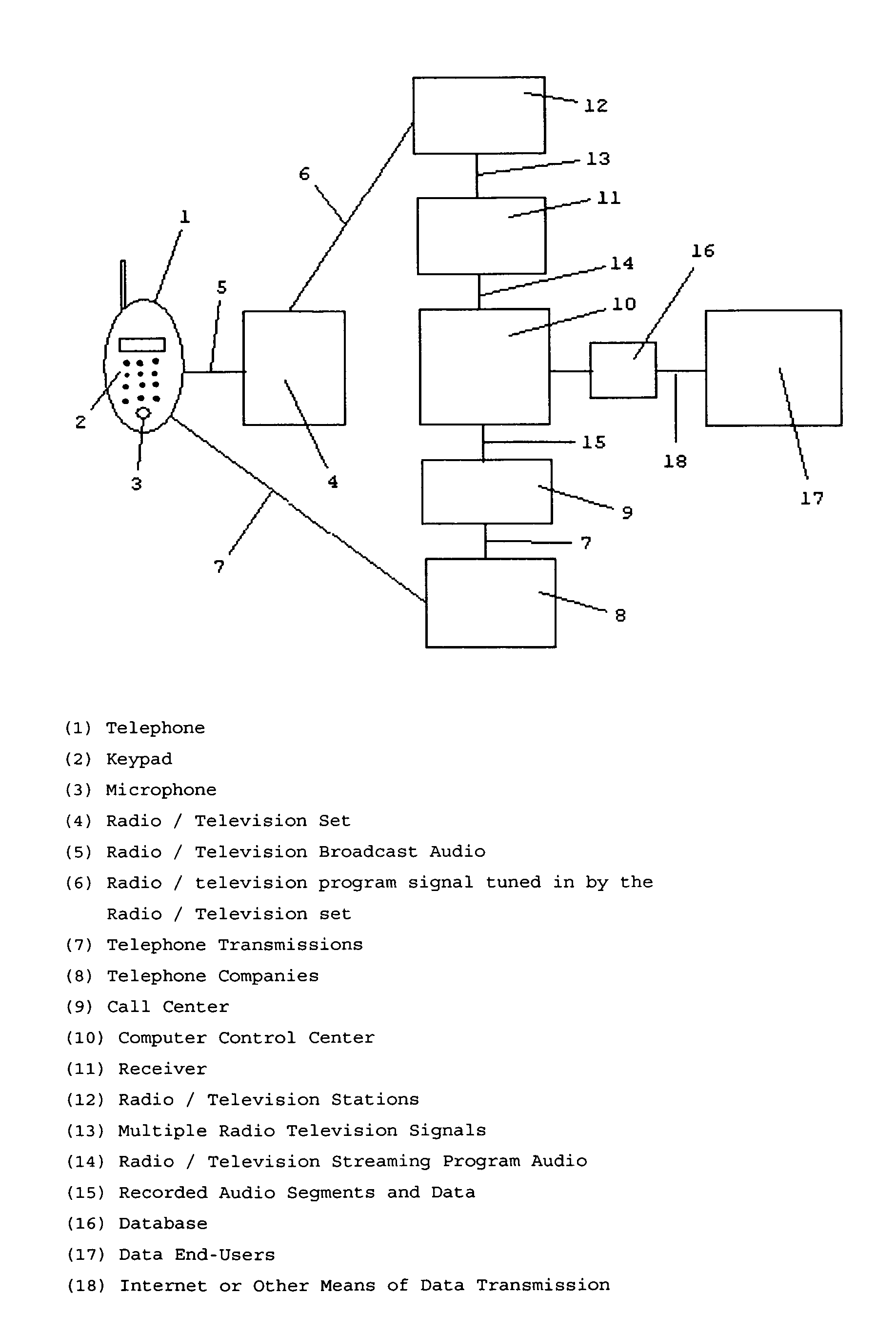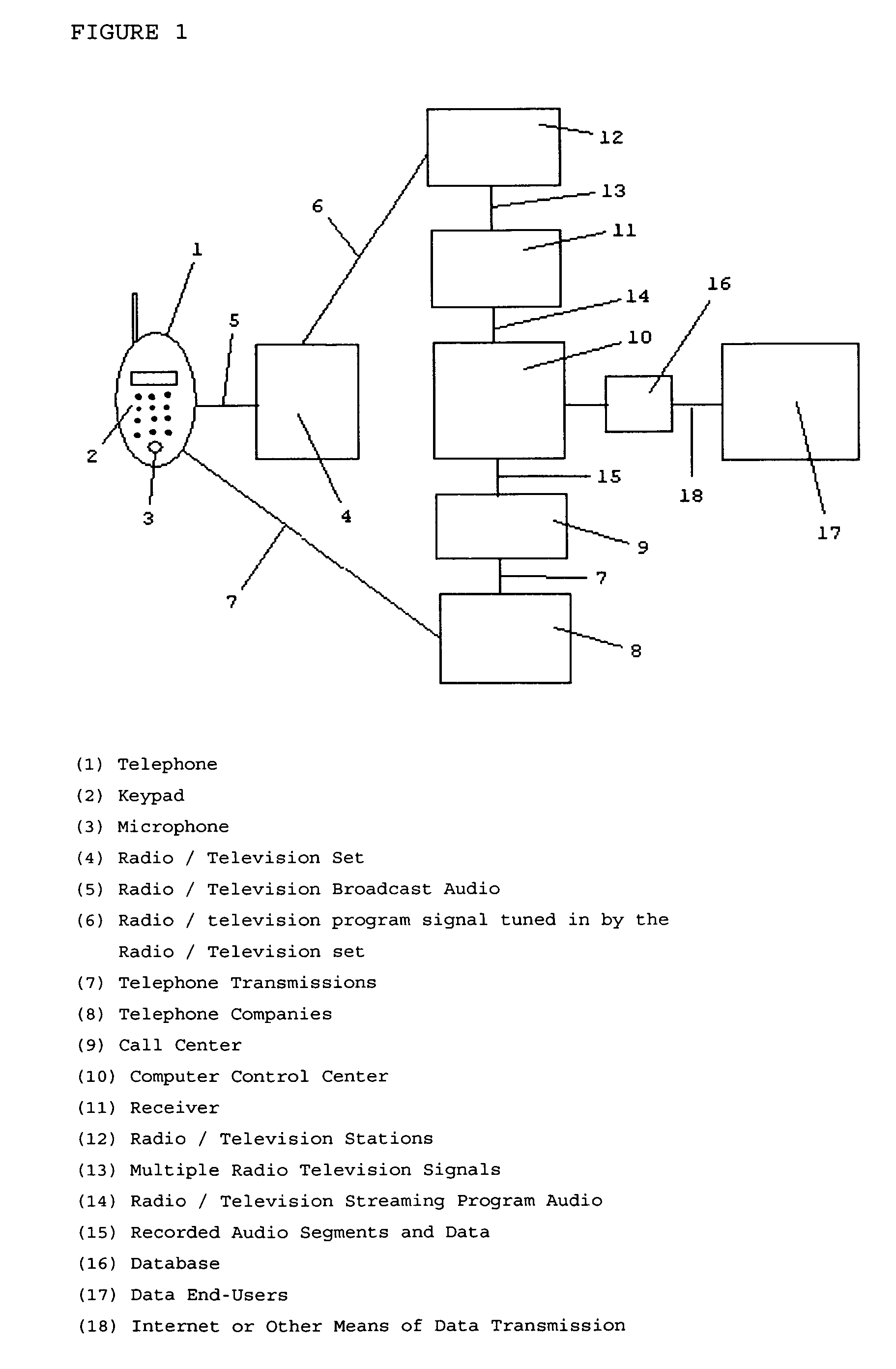System for gathering and recording real-time market survey and other data from radio listeners and television viewers utilizing telephones including wireless cell phones
a technology for which is applied in the field of system for gathering and recording real-time market surveys and other data from radio listeners and television viewers utilizing telephones including wireless cell phones, and can solve the problems of radio or television stations out of business, inaccurate data, and low listenership or viewership, and achieves the effect of reducing the cost of obtaining radio listener data from arbitron, and reducing the cost of obtaining data
- Summary
- Abstract
- Description
- Claims
- Application Information
AI Technical Summary
Benefits of technology
Problems solved by technology
Method used
Image
Examples
Embodiment Construction
[0083]FIG. 1 is a block-drawing, schematic view of an automated radio and television (“radio / television”) data collection and market research system using (i) telephones, including wireless cell phones and hardwired, touch tone and rotary telephones (collectively each a “telephone 1”) to gather radio listener and television viewer program preferences, demographic and other information and data and (ii) current and future computer, software, audio matching, tone frequency identification, audible and subaudible signal detection and encoding, voice recognition, database 16 software and Internet technology to provide real time, accurate, statistically significant and verifiable market research and other data and information for the radio and television broadcast and advertising industries and any other data end-users 17. The invention works today with current technology.
[0084] 1. The system is designed to gather data on radio / television listener and viewer preferences and habits, liste...
PUM
 Login to View More
Login to View More Abstract
Description
Claims
Application Information
 Login to View More
Login to View More - R&D
- Intellectual Property
- Life Sciences
- Materials
- Tech Scout
- Unparalleled Data Quality
- Higher Quality Content
- 60% Fewer Hallucinations
Browse by: Latest US Patents, China's latest patents, Technical Efficacy Thesaurus, Application Domain, Technology Topic, Popular Technical Reports.
© 2025 PatSnap. All rights reserved.Legal|Privacy policy|Modern Slavery Act Transparency Statement|Sitemap|About US| Contact US: help@patsnap.com


